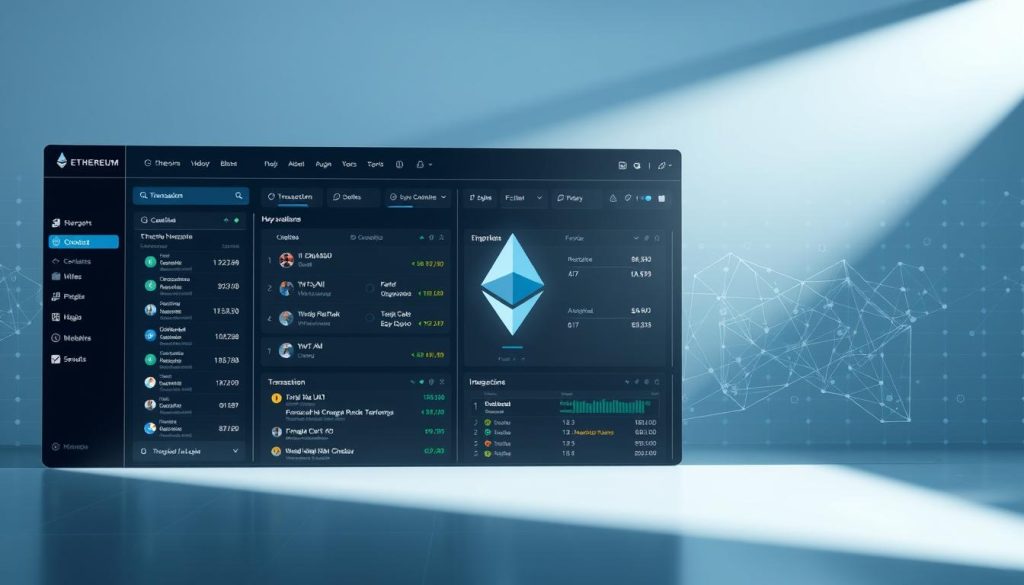The crypto market never stops moving. Every week, dozens of new tokens appear across blockchains, each promising something different, faster transactions, better privacy, unique utilities, or the next big thing in decentralized finance. Some of these launches turn early participants into winners, while others disappear as quickly as they arrived, leaving behind empty wallets and broken promises.
If you’re looking at new token launches, you need to know what you’re getting into. The space moves fast, and the difference between spotting a solid project and falling for a carefully disguised scam often comes down to knowing what to look for. This isn’t about chasing hype or hoping for overnight returns. It’s about understanding how these launches work, what separates the real projects from the noise, and how to make decisions that don’t leave you second-guessing your judgment.
Whether you’ve participated in token launches before or you’re just starting to explore this corner of crypto, the fundamentals matter. You’re going to see a lot of terms thrown around, ICOs, IEOs, IDOs, airdrops, and behind each one sits a different model with its own risks and rewards. Let’s break down what actually matters when a new token hits the market.
Key Takeaways
- New token launches introduce cryptocurrencies to the public through various models like ICOs, IEOs, and IDOs, each with distinct risk levels and accessibility requirements.
- Evaluating new token launches requires thorough research into the project team’s background, whitepaper quality, tokenomics structure, and whether the token solves a genuine problem.
- Scams and rug pulls remain prevalent dangers in new token launches, making it essential to verify team identities, check for locked liquidity, and watch for red flags like excessive hype with no substance.
- Successful participation in new token launches demands strict security practices, including verifying contract addresses, using dedicated wallets, and never investing more than you can afford to lose completely.
- Volatility is extreme in newly launched tokens due to low liquidity and price manipulation risks, so having a predefined exit strategy helps avoid emotional decision-making during rapid price swings.
What Are New Token Launches?

A token launch is the moment when a cryptocurrency project introduces its native token to the public for the first time. Think of it as the digital equivalent of a company going public, except without the regulatory framework that traditional markets have spent decades building. The project creates a new digital asset on a blockchain, usually Ethereum, Binance Smart Chain, Solana, or another smart contract platform, and opens it up for people to buy, trade, or earn.
These launches serve multiple purposes for the projects behind them. First, they raise capital. Building blockchain infrastructure, hiring developers, marketing the project, and maintaining operations all cost money. Selling tokens to early supporters provides the funding needed to turn a whitepaper into working technology. Second, they distribute ownership and governance rights. Many tokens give holders a say in how the project develops, creating a decentralized decision-making structure. Third, they create the economic incentives that keep the network running.
For you as a potential participant, a token launch represents an entry point into a project at its earliest public stage. The tokens are typically priced lower than they might be once the project gains traction and hits major exchanges. That potential for early-stage pricing is what draws people in. But it also means you’re taking on more risk than you would buying an established asset with a track record.
Not all token launches look the same. The method a project chooses to introduce its token tells you something about how it plans to build its community, who it’s targeting, and what kind of regulatory considerations it’s thinking about, or ignoring. The structure of the launch affects who gets access, at what price, and under what conditions.
Types of Token Launches
Initial Coin Offerings (ICOs)
ICOs dominated the crypto fundraising scene back in 2017 and 2018. The model is straightforward: a project announces it’s launching a token, publishes a whitepaper explaining what it plans to build, and opens up a sale where anyone can send cryptocurrency (usually Bitcoin or Ethereum) in exchange for the new tokens.
The appeal was the openness. You didn’t need to be an accredited investor or go through a lengthy vetting process. If you had crypto and an internet connection, you could participate. That accessibility helped projects raise hundreds of millions of dollars, sometimes in minutes. But the lack of oversight also opened the door for problems. Scammers launched fake projects, collected funds, and vanished. Even well-intentioned teams sometimes failed to deliver on ambitious promises.
Regulators eventually took notice. The SEC and other agencies started treating many ICOs as securities offerings, which brought legal complications for projects that hadn’t registered properly. Today, ICOs are less common, though they haven’t disappeared entirely. When you do see one, it’s worth asking why the project chose this older model instead of more recent alternatives.
Initial Exchange Offerings (IEOs)
IEOs emerged as a response to the ICO chaos. Instead of the project handling the token sale directly, a cryptocurrency exchange acts as the intermediary. The exchange vets the project, hosts the sale on its platform, and immediately lists the token for trading once the sale concludes.
For you, this adds a layer of screening. Exchanges have reputations to protect, so they typically conduct some level of due diligence before agreeing to host an IEO. That doesn’t guarantee the project will succeed, but it does filter out the most obvious scams. The downside is accessibility. Most IEOs are limited to users of the specific exchange hosting them, and popular launches can sell out in seconds due to high demand and limited supply.
The exchange also takes a cut, which affects the project’s economics. But the trade-off is immediate liquidity and visibility on a platform with an existing user base. Major exchanges like Binance, Huobi, and OKX have all hosted IEOs that went on to perform well, though plenty of others faded after their initial momentum.
Initial DEX Offerings (IDOs)
IDOs represent the decentralized approach to token launches. Instead of a centralized exchange, the token sale happens on a decentralized exchange (DEX) like Uniswap, PancakeSwap, or a specialized launchpad platform such as Polkastarter or DAO Maker. The project creates a liquidity pool, sets the initial price, and participants buy tokens directly through smart contracts.
This method aligns with the ethos of decentralization that crypto is supposed to represent. There’s no single gatekeeper deciding who can participate. The process is transparent, recorded on-chain, and accessible to anyone with a compatible wallet. The challenge is that without a centralized authority doing preliminary checks, you’re entirely responsible for your own research and security.
IDOs often come with mechanisms to prevent whales from dominating the sale. Some use lottery systems, tiered access based on holding launchpad tokens, or contribution caps. These measures try to give smaller participants a fair shot, though determined buyers with multiple wallets can sometimes work around them. The immediate listing on a DEX also means price discovery happens fast, and volatility in those first hours can be extreme.
Airdrops and Fair Launches
Airdrops flip the traditional fundraising model on its head. Instead of selling tokens, the project gives them away to wallet addresses that meet certain criteria, maybe you used a protocol before a certain date, held specific NFTs, or participated in community activities. The goal is to reward early supporters and distribute tokens widely without concentrating ownership in the hands of wealthy buyers.
Fair launches take decentralization even further. There’s no private sale, no team allocation with special privileges, no venture capital investors getting tokens at a discount. Everyone starts on equal footing, with tokens distributed through mining, staking, or participation in the protocol itself. Yearn Finance’s YFI token is one of the most cited examples. The founder didn’t keep any tokens for himself, and early users earned YFI by providing liquidity.
These models sound ideal in theory. In practice, they’re rare because they don’t provide immediate funding for development. Teams need to find other ways to support themselves, which often means they do hold some tokens or carry out alternative revenue models. When you see a genuinely fair launch or a meaningful airdrop, it’s worth paying attention, but also worth questioning how the project plans to sustain itself long-term.
How to Identify Promising Token Launches
Evaluating the Project Team and Whitepaper
You can’t separate a token from the people building the project behind it. Before you consider participating in a launch, find out who’s actually running things. Are the team members public, with verifiable backgrounds? Have they shipped products before, either in crypto or in traditional tech? Anonymous teams aren’t automatically red flags, plenty of legitimate projects value privacy, but they do add risk. You’re trusting people you can’t identify to follow through on their promises.
Look at their track record. If the founder previously led a failed project, how did they handle it? If they’re first-timers, who’s advising them? Strong advisory boards don’t guarantee success, but they suggest the team has connections and guidance from people who’ve been through launches before.
The whitepaper is your blueprint for what the project claims it will build. Read it. Actually read it, not just skim the summary. Does it explain a real problem and propose a solution that makes sense? Or is it full of buzzwords strung together with vague promises? Technical details matter. If the whitepaper glosses over how the technology actually works, that’s a warning sign. So is copy-pasting from other projects, yes, that happens more than you’d think.
Check whether the project has working code. A GitHub repository with active commits shows the team is building something, not just talking about it. If the code is private or nonexistent months into development, ask yourself why.
Assessing Tokenomics and Utility
Tokenomics, the economic model governing how a token works, can make or break a project. You want to understand the total supply, the distribution plan, and what the token actually does within the ecosystem. If a token has no clear purpose beyond speculation, its long-term value is questionable.
Look at the allocation breakdown. How much goes to the team and early investors? If insiders control a massive percentage, they have the power to dump tokens on the market once lockup periods end, tanking the price. Vesting schedules that release tokens gradually are healthier than immediate full access.
Inflation matters too. Some tokens have fixed supplies, while others mint new tokens indefinitely. Understand how new tokens enter circulation and whether there are burning mechanisms that remove tokens from supply. The balance between inflation and deflation affects long-term price dynamics.
Utility is the big question. Why does this token need to exist? Does it grant access to a service, provide governance rights, distribute protocol revenue, or enable specific transactions? Tokens that solve actual problems within their ecosystems have better staying power than those that exist purely for fundraising.
Examining Community and Market Interest
A project’s community tells you a lot about its prospects. Join their Discord or Telegram. Are people asking thoughtful questions, or is it just price speculation and moon memes? Do team members engage meaningfully with concerns, or do they deflect criticism and ban skeptics? Healthy communities have debates, technical discussions, and genuine enthusiasm for what’s being built.
Social media presence matters, but scrutinize it. Follower counts can be bought. Look at engagement quality instead. Are people retweeting and commenting because they care about the project, or because they’re incentivized to shill it? Influencer endorsements mean little if those influencers are paid to promote everything.
Market interest shows up in several ways. Has the project secured partnerships with established players in the space? Are other protocols integrating with it? Is there media coverage from reputable crypto publications? Early traction doesn’t guarantee success, but it does indicate that people beyond the immediate team see potential.
Pay attention to the fundraising details if there was a private sale. Who invested? Respected venture firms with track records in crypto bring more than money, they bring networks, advice, and credibility. Unknown investors or those associated with previous failed projects raise questions.
Risks Associated With New Token Launches
Volatility and Price Manipulation
New tokens are volatile by nature. There’s no established price history, no deep liquidity, and often wild swings based on speculation rather than fundamentals. In the first hours and days after a launch, price movements of 50% or more in either direction aren’t unusual. If you’re entering a position expecting stability, you’re in the wrong market.
Low liquidity makes manipulation easier. Whales with large holdings can swing prices dramatically with relatively modest trades. Coordinated pump-and-dump schemes target new tokens specifically because smaller market caps amplify their efforts. You might see the price spike on hype and coordinated buying, only to crash when the organizers cash out.
Bots are another factor. Automated trading programs can execute transactions faster than any human, snatching up tokens the instant they become available and immediately flipping them at higher prices. If you’re manually participating in a launch, you’re competing against code that doesn’t hesitate or second-guess itself.
Scams and Rug Pulls
Rug pulls remain one of the most prevalent dangers in token launches. The setup is simple: create a token, generate hype, get people to buy in, then pull the liquidity or dump massive token holdings, leaving everyone else with worthless assets. The developers walk away with the funds, and there’s often little recourse.
These scams have gotten more elaborate. Scammers build convincing websites, fake team profiles with stolen photos, and active social media campaigns. They might even deliver initial features to build trust before executing the rug pull later. Some use smart contract backdoors that give them control over token supply or the ability to prevent others from selling.
You can spot warning signs. Excessive hype with little substance. Anonymous teams with no verifiable history. Tokenomics that heavily favor insiders. Locked liquidity is one protective measure, if the project locks the liquidity pool tokens in a time-locked smart contract, they can’t simply remove all the funds. But even locked liquidity doesn’t guarantee safety if the team holds a majority of tokens.
Regulatory Uncertainty
The regulatory landscape for crypto tokens is still taking shape, and new launches exist in a gray area that varies by jurisdiction. What’s permissible in one country might be illegal in another. Projects that launch without considering regulatory implications can face enforcement actions that tank the token’s value or shut down operations entirely.
Securities laws are the primary concern. If a token is deemed a security by regulators like the SEC, the project might need to register it, restrict sales to accredited investors, or face penalties for non-compliance. Many projects try to structure their tokens to avoid security classification, but that’s a legal judgment that can change.
For you as a participant, regulatory risk means a token could get delisted from exchanges, face trading restrictions, or expose you to tax complications. Different countries treat crypto taxes differently, and participating in a token launch might create taxable events even if you haven’t sold anything. The uncertainty isn’t going away soon, and projects that ignore it are gambling with their longevity.
Where to Find Information About Upcoming Token Launches
Finding reliable information about upcoming launches takes work because the space is fragmented across platforms, and not all sources are trustworthy. Your research starts with dedicated crypto launch calendars and tracking sites. Platforms like CoinMarketCap, CoinGecko, and ICO Drops maintain lists of upcoming token sales with details about dates, platforms, and participation requirements. These aggregators won’t catch everything, but they cover major launches and provide basic filtering by type and blockchain.
Launchpad platforms are another direct source. If you’re interested in IDOs, following platforms like Polkastarter, DAO Maker, TrustSwap, or Seedify keeps you informed about projects going through their vetting processes. Each platform has its own requirements, often you need to hold their native token to participate, but they typically publish schedules and project details well in advance.
Social media plays a big role, though you need to filter aggressively. Twitter remains the primary communication channel for many crypto projects. Following key developers, venture capital firms, and crypto analysts gives you early signals about what’s coming. Telegram and Discord are where communities form, and joining channels for projects you’re tracking lets you see announcements firsthand. The challenge is separating genuine information from paid promotion and outright scams.
Crypto news sites and newsletters provide curated coverage. Publications like The Block, CoinDesk, Decrypt, and others report on significant upcoming launches, often with analysis that goes beyond the project’s own marketing. Subscribing to newsletters from analysts you trust filters the noise and brings relevant launches to your attention.
On-chain analytics offer a different angle. Tools like Etherscan, DexTools, and Dune Analytics let you track wallet activity, liquidity additions, and smart contract deployments. Experienced users monitor these signals to spot launches before they hit mainstream attention. It’s a more technical approach, but it can give you an edge if you’re comfortable reading blockchain data.
Don’t overlook project websites and official channels. If you’re serious about a particular launch, go directly to the source. Read their blog, check their roadmap, and verify that any information you’ve seen elsewhere actually matches what the team is saying. Scammers create fake accounts and websites to impersonate legitimate projects, so confirming URLs and official social media accounts prevents costly mistakes.
Best Practices for Participating in Token Launches
Participating in token launches requires preparation and discipline. First, never put in more than you can afford to lose completely. That’s not just generic advice, new tokens carry real risk of going to zero, whether through scams, failed execution, or simple lack of market interest. Treat launch participation as high-risk speculation, not investment.
Do your own research, and don’t shortcut it. That means reading the whitepaper, checking the team backgrounds, analyzing tokenomics, and verifying claims. If something promises guaranteed returns or seems too good to be true, walk away. FOMO, fear of missing out, has burned more people than probably any other emotion in crypto. There will always be another launch.
Use security best practices. Make sure you’re interacting with the correct smart contract address. Scammers create fake token sale pages that look identical to the real thing. Verify URLs, double-check contract addresses on multiple sources, and be suspicious of links sent through social media. Use a dedicated wallet for participating in new launches rather than one holding your primary holdings. If something goes wrong, the damage is contained.
Understand the participation mechanics before the launch starts. Different models have different requirements. Do you need to hold a specific token to access the sale? Is there a whitelist you need to join in advance? What’s the accepted payment method? Missing these details means you might not be able to participate at all, or you’ll waste time figuring it out while others are already buying.
Timing matters. Early participation isn’t always better. Some launches see immediate price spikes followed by sharp corrections. Waiting a few hours or days after launch can sometimes get you a better entry point than rushing in during the initial frenzy. That said, high-demand launches might never give you a lower price than the initial sale.
Have an exit strategy before you enter. Decide in advance under what conditions you’ll take profits or cut losses. New tokens can move fast in both directions, and emotional decision-making in the moment rarely works out well. If you’re up 3x, do you take some profit? If you’re down 50%, do you hold or sell? Answering these questions beforehand keeps you from making reactive choices.
Watch out for lockup periods and vesting schedules that might apply to your tokens. Some launches restrict when you can transfer or sell, which affects your liquidity. Know what you’re agreeing to.
Finally, track your transactions for tax purposes. Depending on your jurisdiction, participating in a token launch might create taxable events. Keeping records from the start is easier than trying to reconstruct them later.
Conclusion
New token launches represent some of the highest risk and highest potential reward opportunities in crypto. The space moves quickly, and the difference between projects that deliver and those that disappoint often isn’t clear until well after the launch hype fades. You’re not just buying a token, you’re making a bet on a team, a technology, and a market thesis, all of which can change rapidly.
Success in this environment comes from doing the work that most people skip. Read the technical documentation. Verify the team’s credentials. Understand the tokenomics and what drives demand for the token beyond speculation. Ask hard questions about what problem the project solves and whether the solution makes sense. The projects that survive and grow tend to be the ones built by competent teams solving real problems with clear use cases.
The risks are real and shouldn’t be downplayed. Scams exist. Projects fail. Regulations shift. Prices crash. But dismissing all new launches because of those risks means potentially missing projects that go on to define the next phase of crypto development. The key is approaching each opportunity with clear eyes, appropriate skepticism, and risk management that protects you from catastrophic losses while keeping you in the game for the wins that matter.
Stay informed, stay cautious, and never stop questioning what you’re told about any new token. The responsibility for protecting your capital sits with you, and in a space where things move this fast, that responsibility requires constant attention and honest self-assessment of what you actually know versus what you’re assuming.
Frequently Asked Questions
What are new token launches in cryptocurrency?
New token launches are when a cryptocurrency project introduces its native token to the public for the first time. They serve to raise capital, distribute ownership and governance rights, and create economic incentives for the network while offering early participants entry at potentially lower prices.
What is the difference between ICO, IEO, and IDO?
ICOs are direct token sales from projects to buyers, IEOs are hosted and vetted by centralized exchanges offering added screening, and IDOs occur on decentralized exchanges through smart contracts with no centralized gatekeeper. Each model offers different levels of accessibility and oversight.
How can I identify a promising token launch?
Evaluate the project team’s background and track record, read the whitepaper for technical substance, assess tokenomics and real utility, check for active development on GitHub, examine community engagement quality, and verify partnerships with established players in the crypto space.
What is a rug pull in crypto token launches?
A rug pull is a scam where developers create hype around a new token, attract investors, then pull liquidity or dump their holdings, leaving participants with worthless assets. Warning signs include anonymous teams, excessive hype, and tokenomics heavily favoring insiders.
Where can I find information about upcoming token launches?
Use crypto launch calendars like CoinMarketCap and CoinGecko, follow launchpad platforms such as Polkastarter and DAO Maker, monitor project Twitter and Telegram channels, read crypto news sites like CoinDesk, and use on-chain analytics tools like Etherscan for early signals.
Are new token launches regulated by financial authorities?
Token launches exist in a regulatory gray area that varies by jurisdiction. Many tokens risk being classified as securities by authorities like the SEC, which could require registration or restrict sales. Regulatory uncertainty remains a significant risk for both projects and participants.










 Bitcoin
Bitcoin  Ethereum
Ethereum  Tether
Tether  XRP
XRP  USDC
USDC  Wrapped SOL
Wrapped SOL  TRON
TRON  Lido Staked Ether
Lido Staked Ether  Dogecoin
Dogecoin